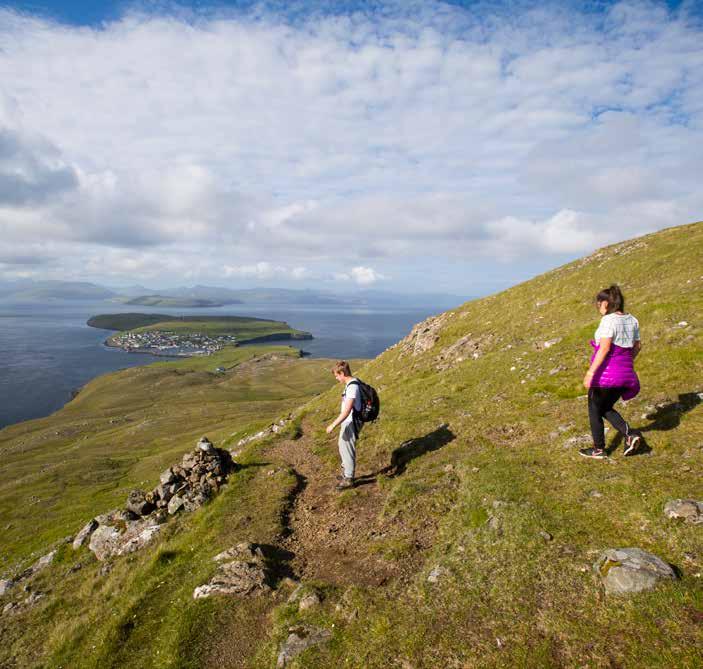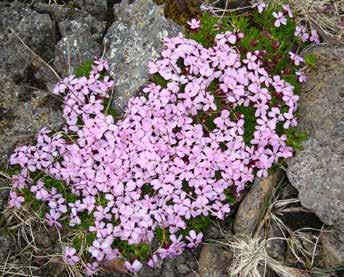
3 minute read
Nólsoy Borðan 16
Nólsoy Borðan
A hike with a touch of royalty to the beautiful old lighthouse in southern Nólsoy
The route starts at the path that runs southwards from Nólsoy village. Just inside the outfield fence, you come upon an area, Korndalur, with many ruins from the old days. These are the Prinsessutoftir . Legend tells about a Scottish King’s daughter who had a falling out with her father because he would not acknowledge the man she wanted to marry and whose child she was carrying. They fled, arrived at Nólsoy and settled here.
There are traces of the old water pipe just outside the outfield fence. Follow this trail to the old reservoir . Here, the cairns begin and soon you will walk up the slope west of the island. On the hike uphill, there is a site called Uppi í Skipi, where people hid from pirates in the old days.
Near the top, you come to Hvíliplássið . It is customary to rest here. The view is outstanding. You can see the northern islands, Skálafjørður, Sundalagið, all of Tórshavn and a little bit of Sandoy. Somewhat further south, at á Kagnum , there is a very good view southwards. The name stems from troubled times when people sneaked out from their hiding places and came to peek southwards to see if the pirates had left.

From the small spring, Kolturskeldan, you see Koltur outlined above Havnardalur.
Then there’s a long stretch, Langabrekka , where you follow the path straight ahead. Here, the terrain can be quite wet in places.
There are cairns all the way to the Nólsoy lighthouse, the beacon at Tumbin , but some of them are small and can be difficult to spot. Use the two masts that stick up where the lighthouse stands as landmarks. Just north of the house, the British built two attraps (houses built to mislead the Germans during World War II).
The lighthouse, Nólsoyar Viti, was built in 1893. Back then, the lens was one of the largest in the world of its kind. It is 2.82 metres high and weighs about four tons. Both the lighthouse and the related houses are superior workmanship, stacked from carved rocks. Nearby, you can see where the rocks were collected. The houses were built for three families. Borðan’s population totaled 10 children at its peak. Borðan alternated with Nólsoy village in having the school. No one lives in Borðan now. The silhouette of Kapilin can be seen in front of the beacon.
You can also walk down to Stallurin . This is the landing place where everything which was taken to Borðan was unloaded. People from Nólsoy have also shipped peat from Stallurin. The name Stallurin (the stable) stems from the boats being able to lie side Duration: Five hours (return)
Distance: About 13 -14 km
Difficulty: It is steep and in some places difficult to walk up to Hvíliplássið. But when you come up, there is level ground all the way to Borðan
Maximum height: 200 m
Children: Suitable for children
Surface: Grass cairn path, some places stony and rocky
Maps: 508 and 509
by side like horses in a stable.
There is also another lighthouse on the southern tip in this area, about one and a half kilometre from Nólsoyar Viti.
Be careful on your way back. Follow the cairns so you are on the right path down the hill. Two cairns are placed closely together. The northern one is Omansneiðingarvarðin . Turn here when going down.











